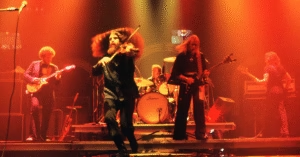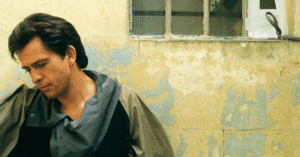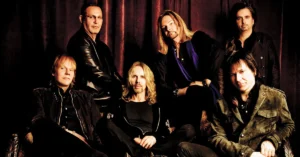Porcupine Tree: Modern Architects of Progressive Rock’s Darker Side
Porcupine Tree. Formation and Origins
Porcupine Tree was formed in 1987 by British musician Steven Wilson as a solo studio project, originally conceived as a fictional progressive rock band with an elaborate invented history. What began as an experimental outlet for Wilson’s love of psychedelia, krautrock, and ambient music soon evolved into a real band — and eventually one of the most respected names in modern progressive rock.
By the mid-1990s, Porcupine Tree had become a fully functioning band with a core lineup:
- Steven Wilson – Vocals, guitars, keyboards, principal songwriter
- Richard Barbieri – Keyboards (ex-Japan)
- Colin Edwin – Bass
- Chris Maitland – Drums (until 2002), later replaced by
- Gavin Harrison – Drums (joined in 2002, now also of King Crimson)
Porcupine Tree. Musical Style and Evolution
Porcupine Tree’s sound spans multiple genres:
- Progressive rock
- Psychedelic rock
- Space rock
- Ambient / electronic
- Alternative metal / post-rock
Wilson’s songwriting explores themes of urban alienation, inner conflict, technology, addiction, and existential dread. The band combines atmospheric textures with crushing heaviness and emotional introspection, drawing comparisons to Pink Floyd, Radiohead, and Tool, while crafting a sound entirely their own.
Porcupine Tree. Albums and Highlights by Era
✦ The Sky Moves Sideways (1995)
An atmospheric space-rock opus often called “the best Pink Floyd album they never made.” Features long instrumental passages and cosmic themes.
✦ Signify (1996)
A bridge between the ambient/psychedelic phase and the heavier, more structured songwriting. Tracks like “Waiting” gained underground popularity.
✦ Stupid Dream (1999) & Lightbulb Sun (2000)
Marked a shift to song-oriented structures, blending prog elements with alt-rock accessibility. Known for emotionally resonant tracks like “Pure Narcotic” and “Shesmovedon.”
✦ In Absentia (2002)
A creative breakthrough, fusing progressive metal with melancholic lyricism. Features classics like:
- “Trains”
- “Blackest Eyes”
- “The Sound of Muzak”
Drummer Gavin Harrison joins here, elevating the rhythmic complexity.
✦ Deadwing (2005)
Loosely based on a surreal screenplay, the album blends melody with crushing riffs. Standouts include “Lazarus” and “Arriving Somewhere but Not Here.”
✦ Fear of a Blank Planet (2007)
A conceptual masterpiece about youth alienation in the digital age. Guest appearances by Alex Lifeson (Rush) and Robert Fripp (King Crimson). Tracks like “Anesthetize” (17 minutes) are fan favorites.

✦ The Incident (2009)
A 55-minute title track presented as one continuous song cycle. Themes of disconnection, trauma, and observation dominate. A polarizing but bold artistic statement.
Porcupine Tree. Hiatus and Return
After 2010, Porcupine Tree entered an indefinite hiatus, as Wilson focused on his prolific solo career. Many assumed the band was over — until 2022, when they returned with:
✦ CLOSURE / CONTINUATION (2022)
The band’s first studio album in 13 years — darker, leaner, and refined. Features Wilson, Harrison, and Barbieri (Colin Edwin was not involved). It was met with critical acclaim and supported by a world tour.
Porcupine Tree. Legacy and Influence
Porcupine Tree redefined progressive rock for the 21st century — mixing conceptual ambition with modern production and emotional realism. Their influence spans:
- Prog metal (Opeth, Riverside, Haken)
- Post-progressive artists (Anathema, The Pineapple Thief, Leprous)
- Ambient and electronic musicians influenced by Wilson’s production style
They are widely credited with bridging the gap between the 1970s prog giants and a new wave of emotionally-driven progressive music.
Interesting Facts
- Steven Wilson has remixed albums by King Crimson, Yes, Jethro Tull, and Gentle Giant, bringing prog classics to a new audience.
- Porcupine Tree’s name was deliberately absurd and surreal — originally part of a fake band biography Wilson wrote for fun.
- The band’s album covers and artwork (by Lasse Hoile and Carl Glover) are an integral part of their dark, immersive aesthetic.
- Gavin Harrison is widely regarded as one of the greatest modern drummers, praised for his complex polyrhythms and precision.




